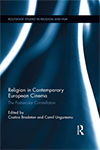- Author(s): Laszlo Attila Hubbes
- When: 2014-07
- Where: Acta Universitatis Sapientiae, Philologica
Hungarian civil religion in general, and various ethno-pagan spiritualities in special are deeply unsatisfied with the canonical version(s) of ancient national history. Screening history is an act of powerful pictorial mythologization of historical discourses and also a visual expression of national characterology. In recent years two animated films were released, telling the ancient history of Hungarians, but the stories they tell are very different. Not long after Marcell Jankovics's Song of the Miraculous Hind1 (Enek a csodaszarvasrvol, 2002), a long fantasy animation based on ethnographic and historical data, another similar long animation: Heaven's Sons (Az vig fiai, 2010) started to circulate on YouTube and other various online Hungarian video-sharing channels. It seems as if the latter, an amateur digital compilation by Tibor Molnv°r, would have been made in response to the first film, to correct its "errors", by retelling the key narratives. Built mainly on two recent mythopoetic works: the Arvisura and the Yotengrit (both of them holy scriptures for some Hungarian Ethno-Pagan movements), Molnar's animation is an excellent summary of a multi-faceted new Hungarian mythology, comprising many alternative historical theses. My paper aims to present two competing images of the Nation on the basis of several parallel scenes, plots and symbolic representations from the two animations.







